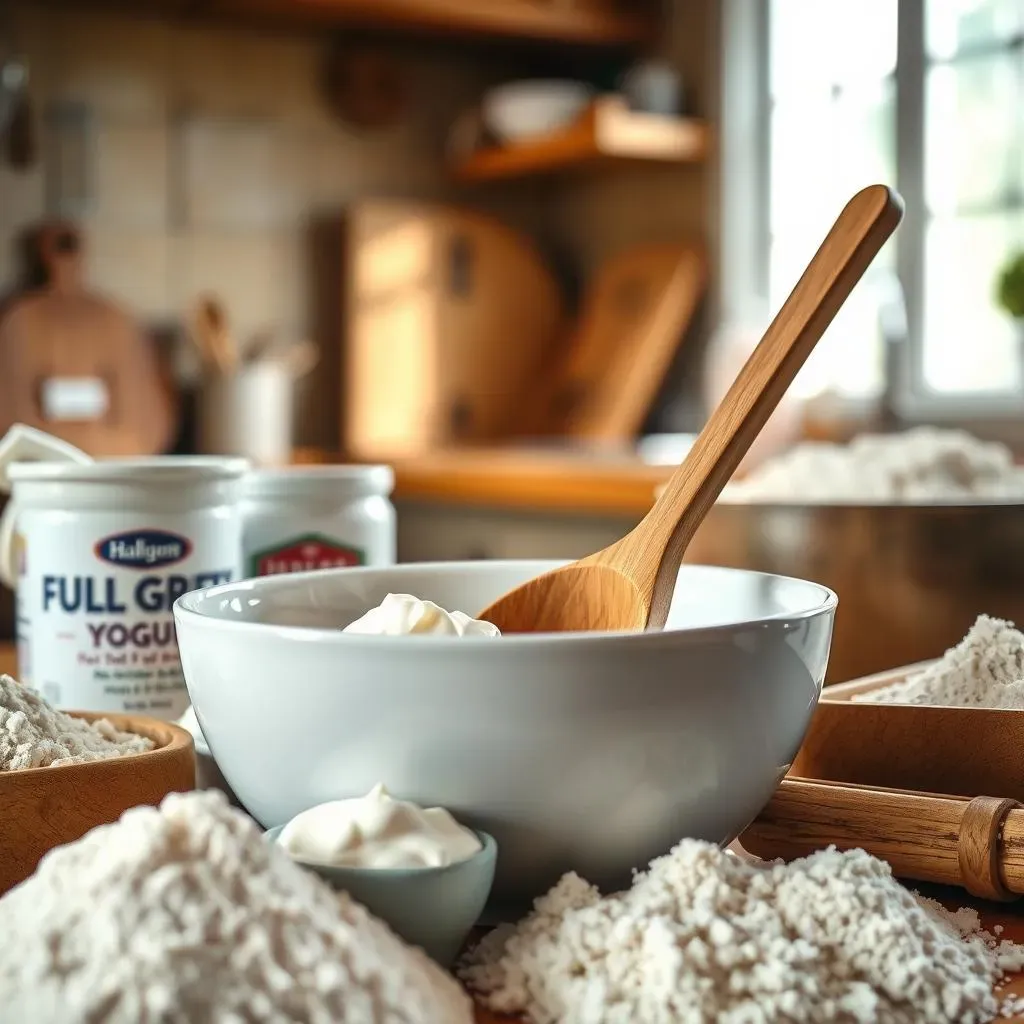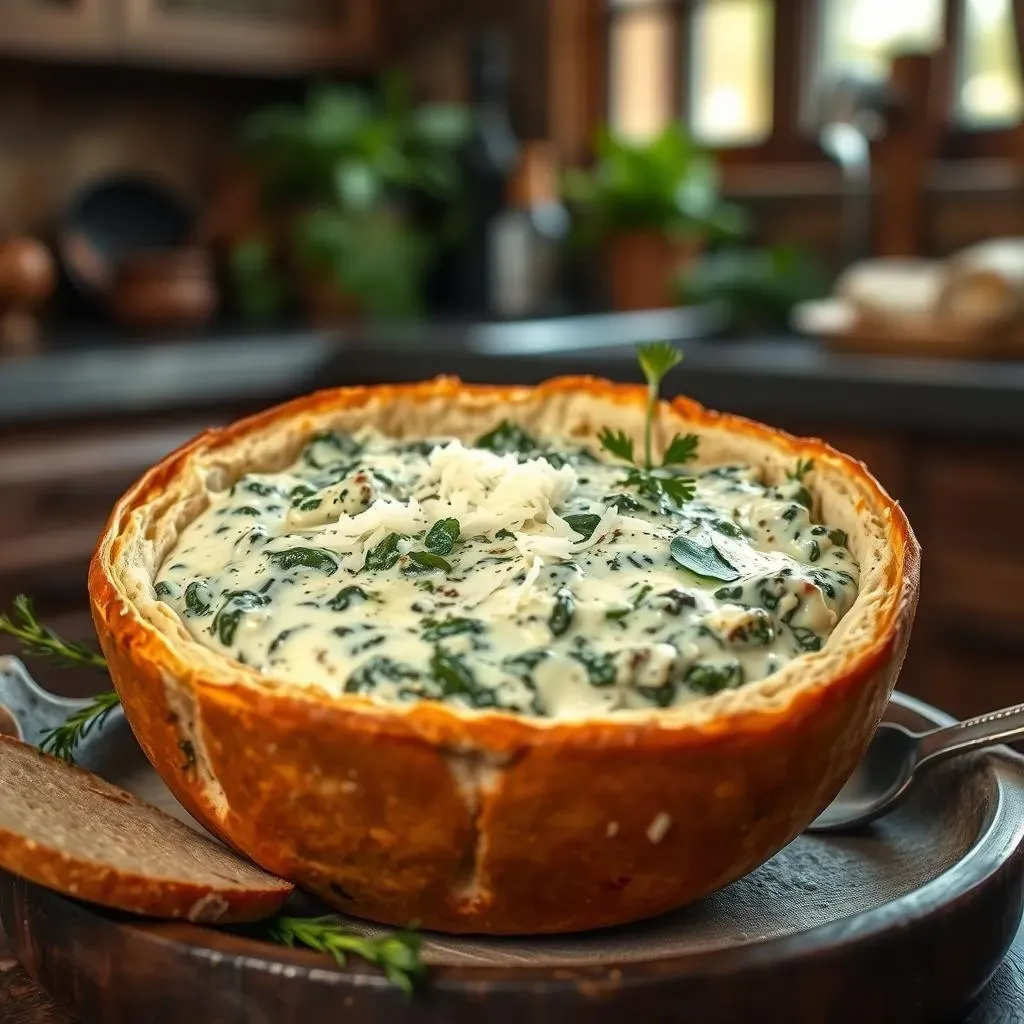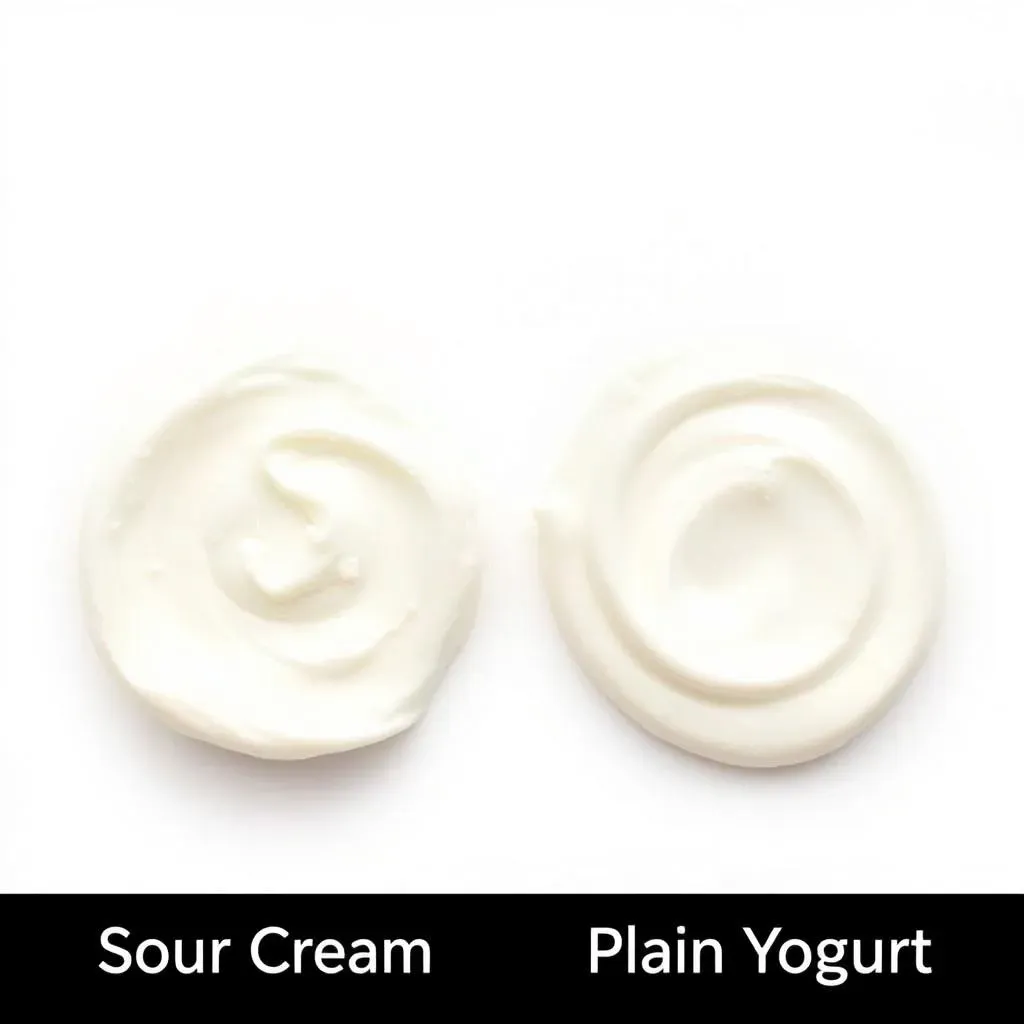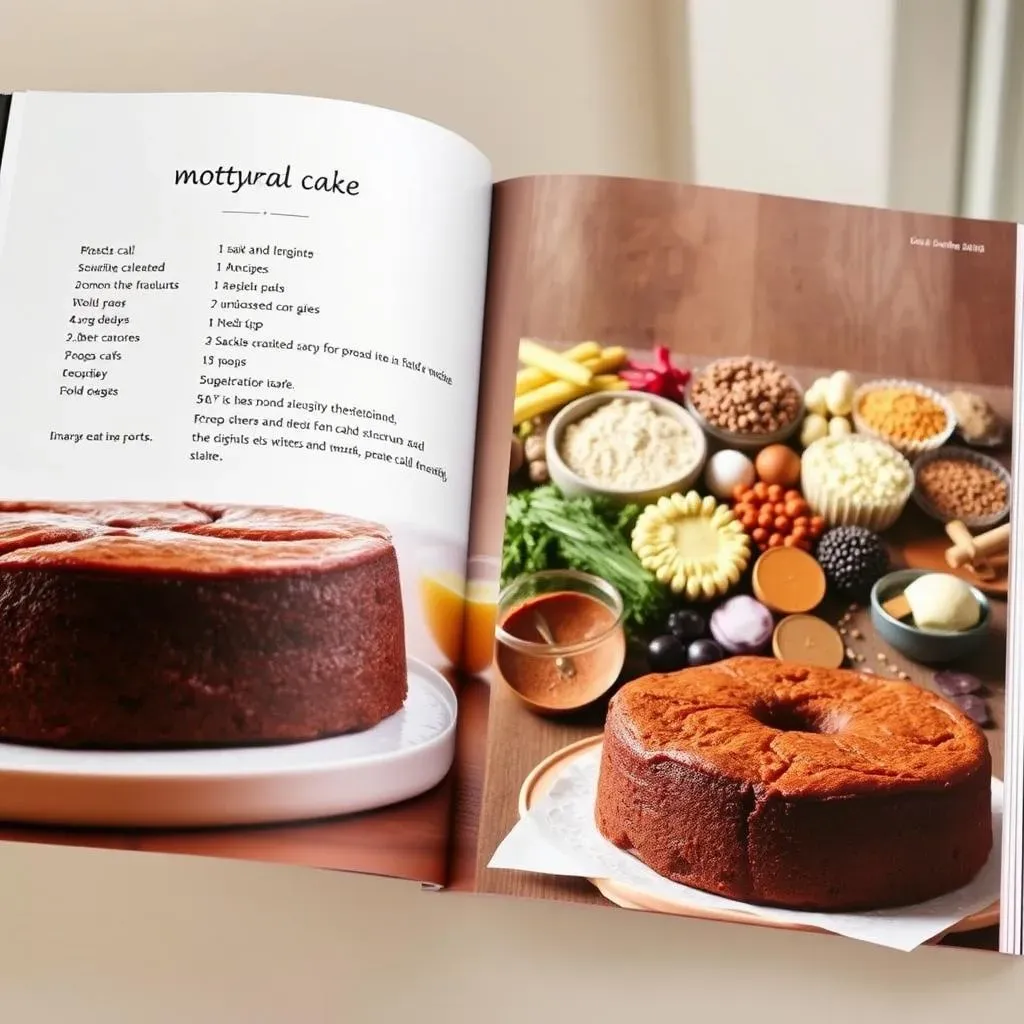Table of Contents
Ever stared into your fridge, recipe in hand, only to discover you're out of sour cream? Don't panic! This article tackles the burning question: can you substitute sour cream for plain yogurt? We'll explore the nuances of this common culinary swap, guiding you through the possibilities and pitfalls. We'll examine whether this substitution works equally well in both sweet and savory dishes, delving into the specific considerations for baking and cooking. Understanding the key differences between sour cream and plain yogurt – their texture, fat content, and tang – is crucial for successful substitutions. We'll arm you with the knowledge to confidently make this swap, providing practical tips and tricks to ensure your dishes turn out perfectly. So, ditch the sour cream anxiety and discover how to achieve delicious results using readily available plain yogurt. Let's get started!
Can You Substitute Sour Cream for Plain Yogurt in Baking?

Can You Substitute Sour Cream for Plain Yogurt in Baking?
The Great Yogurt Swap: A Baker's Dilemma
So, you're baking and realize you're missing a key ingredient: sour cream. Can you use plain yogurt instead? The short answer is: often, yes! Both sour cream and yogurt contribute moisture and a slight tang to baked goods. However, there are some subtle differences that can affect the final product. Sour cream generally has a higher fat content, leading to richer, more tender results. Yogurt, especially Greek yogurt, can be a bit thinner and tangier.
The success of your substitution will depend on the recipe. In some cases, a direct 1:1 swap will work perfectly. In others, you might need to make minor adjustments. For example, if your recipe calls for a significant amount of sour cream for richness, you might find that the final product is a bit drier when using yogurt.
Ingredient | Sour Cream Effect | Yogurt Effect (Plain/Greek) |
|---|---|---|
Fat Content | Higher, creates richer texture | Lower, can result in drier texture |
Tanginess | Subtle tang | More pronounced tang (especially Greek yogurt) |
Moisture | Adds moisture and richness | Adds moisture but may be less rich |
Choosing the Right Yogurt: Full-Fat is Your Friend
The type of yogurt you choose matters! Full-fat yogurt is your best bet for mimicking the richness of sour cream. Low-fat or non-fat yogurt will result in a drier cake or muffin. Greek yogurt, with its thicker consistency, often works even better than regular yogurt, as it's closer in texture to sour cream. However, be mindful of its stronger tang—you might need to slightly reduce other acidic ingredients in your recipe to balance it.
Don't be afraid to experiment! Start by substituting half of the sour cream with yogurt, and see how it turns out. You can always adjust the next time. Remember, baking is a science, but it's also an art—don't be afraid to get creative and make it your own!
- Use full-fat yogurt for best results.
- Greek yogurt is a great option due to its thicker consistency.
- Adjust other acidic ingredients if using Greek yogurt.
- Start with a partial substitution to test the results.
Troubleshooting Your Yogurt Swap: Tips for Success
Sometimes, even with the best intentions, a yogurt substitution might not yield the exact same result as using sour cream. If your baked goods turn out a little dry, you can try adding a tablespoon or two of milk or oil to add moisture. If the tang is too strong, consider reducing the amount of lemon juice or vinegar in the recipe.
Baking is all about balance. Think of the ingredients as a team working together. If one player (sour cream) is absent, you might need to adjust the other players (yogurt, milk, etc.) to keep the team playing well together. Keep experimenting; with a little practice, you’ll become a pro at making delicious substitutions!
Using Plain Yogurt as a Sour Cream Substitute in Savory Dishes

Using Plain Yogurt as a Sour Cream Substitute in Savory Dishes
Swapping Sour Cream for Yogurt in Dips and Sauces
Now, let's move from the sweet world of baking to the savory realm of dips and sauces. Here, substituting plain yogurt for sour cream is often a fantastic choice, especially if you're aiming for a healthier option. The tanginess of yogurt complements many savory flavors, from herbs and spices to roasted vegetables and meats. Think of a creamy spinach and artichoke dip, or a zesty tzatziki sauce—both are easily adaptable to use yogurt instead of sour cream.
The key is to consider the texture. Greek yogurt, with its thicker consistency, is often preferred for dips and sauces that need to hold their shape. If you're using regular yogurt, you might need to add a little extra thickening agent, such as cornstarch or flour, to achieve the desired consistency. Remember that the flavor profile might shift slightly. A little extra lemon juice or vinegar can help replicate the sharpness of sour cream if needed.
Dish | Sour Cream | Yogurt Substitute | Notes |
|---|---|---|---|
French Onion Dip | Adds richness and creaminess | Greek yogurt provides a similar texture, may need a touch more salt | Consider adding a pinch of onion powder for extra flavor. |
Taco Dip | Creamy base for toppings | Plain yogurt works well, might need a little lime juice to brighten | Greek yogurt might be too tangy for this application. |
Yogurt in Savory Baking: Unexpected Deliciousness
You might be surprised to learn that plain yogurt can also shine in savory baking. Think savory muffins, cornbread, or even some types of quick breads. The moisture and slight tang of yogurt can add depth and complexity to these dishes. It's similar to the way sour cream works, but again, the fat content difference will result in a slightly different final product. You might need to adjust baking times or add a bit of extra oil if you notice the final product is too dry.
The beauty of yogurt in savory baking lies in its versatility. It can be paired with herbs, cheeses, and spices to create a wide range of flavors. Experiment with different herbs like chives, dill, or rosemary, and see how they interact with the yogurt's tang. You might even discover your new favorite savory treat! Don't be afraid to experiment and find what works best for your palate. Remember that slight adjustments to your recipe can yield big flavor differences.
- Savory muffins: Add shredded cheese, herbs, and vegetables.
- Cornbread: Yogurt adds moisture and a subtle tang.
- Quick breads: Experiment with different herbs and spices.
Beyond Dips and Baking: Unexpected Uses for Yogurt
The versatility of yogurt extends beyond dips and baking. Consider using it as a base for creamy sauces, such as a creamy mushroom sauce or a flavorful sauce for chicken or fish. The tang of the yogurt cuts through the richness of the other ingredients, creating a balanced and delicious flavor profile. You can also use it in marinades for meats, poultry, or fish. The lactic acid in the yogurt helps to tenderize the meat while adding a unique flavor.
Remember that the success of your yogurt substitution depends on the specific recipe and your own preferences. Start with small substitutions and gradually increase the amount of yogurt as you gain confidence. Don't be afraid to experiment and adapt recipes to your liking. The culinary world is vast and full of possibilities. Embrace the adventure of exploring new flavors and techniques!
Understanding the Differences: Sour Cream vs. Plain Yogurt

Understanding the Differences: Sour Cream vs. Plain Yogurt
Fat Content and Texture: A Key Distinction
Before we dive into substitutions, let's understand the core differences between sour cream and plain yogurt. The most significant difference lies in their fat content. Sour cream typically boasts a higher fat percentage, often around 18-20%, contributing to its rich, thick, and creamy texture. This higher fat content also impacts its mouthfeel—it's smoother and more decadent.
Plain yogurt, on the other hand, has a significantly lower fat content, varying greatly depending on the brand and type. Nonfat or low-fat yogurts can be quite thin and watery, while full-fat varieties and Greek yogurt offer a thicker consistency but still generally less rich than sour cream. This difference in fat content directly affects how each behaves in recipes, impacting both texture and moisture.
Characteristic | Sour Cream | Plain Yogurt (Full-Fat) | Plain Yogurt (Low-Fat) |
|---|---|---|---|
Fat Content | High (18-20%) | Moderate (around 2-8%) | Low (less than 2%) |
Texture | Thick, creamy | Thicker than low-fat, but less than sour cream | Thin, watery |
Mouthfeel | Smooth, decadent | Creamy, but less rich | Less creamy |
Acidity and Flavor: Subtle Yet Significant Variations
Beyond fat content, the acidity and overall flavor profile of sour cream and yogurt also differ. Sour cream possesses a characteristic tang, but it's typically milder and less sharp than plain yogurt. This subtle tang adds a pleasant complexity to both sweet and savory dishes. The level of tanginess in yogurt can vary wildly, with Greek yogurt often exhibiting a more pronounced tartness compared to regular plain yogurt.
These subtle differences in acidity can impact the overall flavor balance of a recipe. When substituting yogurt for sour cream, you might need to adjust other acidic ingredients in the recipe to maintain the desired level of tartness. For instance, if using a particularly tangy Greek yogurt, you might reduce the amount of lemon juice or vinegar called for in the recipe to avoid an overly acidic final product. Remember, it's always best to start with a small substitution and adjust based on your taste.
- Sour cream: Milder, less sharp tang.
- Plain yogurt: Varies in tanginess; Greek yogurt is typically tangier.
- Adjust other acidic ingredients as needed when substituting.
Can you substitute sour cream for plain yogurt? Recipes and Tips for Success

Can you substitute sour cream for plain yogurt? Recipes and Tips for Success
Sweet Successes: Baking with Yogurt Instead of Sour Cream
Let's start with baking, a realm where precision is key. Remember, sour cream adds richness and moisture. Yogurt, especially full-fat varieties or Greek yogurt, can step in, but you might need to adjust. If a recipe calls for a lot of sour cream, the yogurt might leave your cake a tad dry. To combat this, consider adding a tablespoon or two of milk or oil to boost the moisture. Also, the tang of yogurt, especially Greek yogurt, is more pronounced than sour cream. If your recipe already includes lemon juice or vinegar, you might want to reduce the amount to avoid an overly tart result. Experimentation is your best friend here! Small tweaks can make a big difference.
Don't be afraid to experiment! Start by swapping out only half the sour cream with yogurt to see how it affects the final product. You can always adjust in future batches. The beauty of baking (and cooking!) lies in the iterative process. Each attempt brings you closer to your perfect recipe. Don't be discouraged if your first attempt isn't perfect – keep practicing and you’ll soon become a substitution master!
Recipe Type | Yogurt Recommendation | Potential Adjustments |
|---|---|---|
Cakes | Full-fat or Greek yogurt | Add 1-2 tbsp milk or oil if too dry |
Muffins | Full-fat or Greek yogurt | Reduce acidic ingredients if too tart |
Cookies | Full-fat yogurt | May require slightly increased baking time |
Savory Sensations: Yogurt in Savory Dishes
Now, let's explore the savory side. Substituting yogurt for sour cream in dips, sauces, and even some savory baked goods works surprisingly well. The tanginess of yogurt complements many savory flavors, making it a versatile ingredient. For dips like French onion dip or spinach artichoke dip, Greek yogurt provides a thicker, creamier texture, often needing only a pinch more salt to match the sour cream's flavor profile. In sauces, however, the thinner consistency of regular yogurt might require a thickening agent like cornstarch or flour to achieve the desired texture. Remember, taste as you go and adjust accordingly.
Experimentation is key in savory cooking as well. Don't be afraid to play with spices and herbs to enhance the flavor. A little extra lemon juice or vinegar can help replicate sour cream's sharpness if needed. Remember, each dish has its own personality, and the best substitution will depend on the specific ingredients and flavors involved. The key is to balance the flavors and textures to create a harmonious dish. Embrace the culinary adventure and discover your own unique adaptations!
- French Onion Dip: Greek yogurt is excellent; add a little extra onion powder.
- Taco Dip: Plain yogurt works well; add a squeeze of lime juice.
- Savory Muffins: Yogurt adds moisture and a subtle tang; experiment with herbs and cheese.